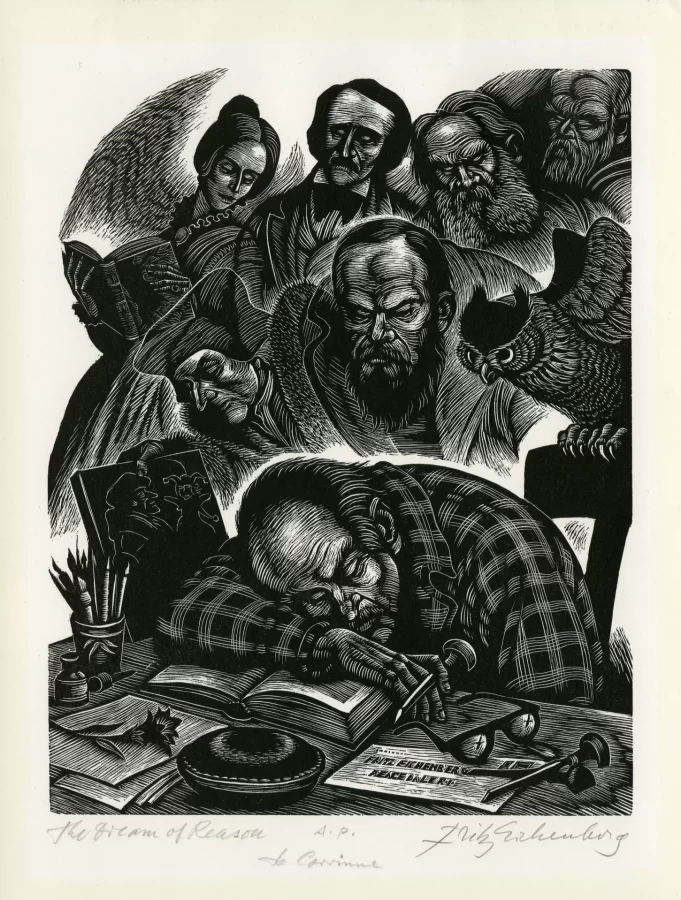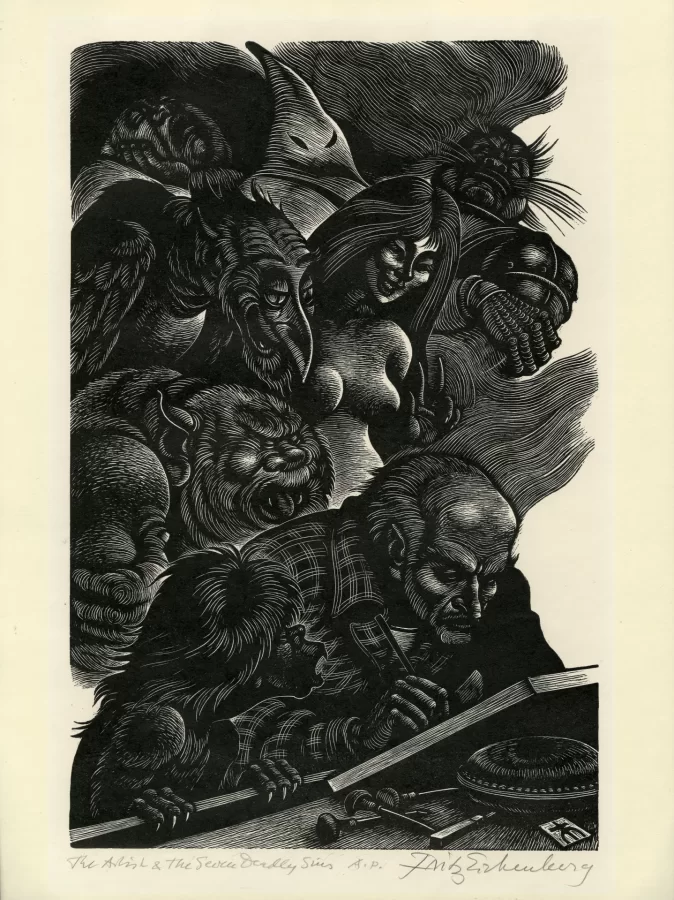Fritz Eichenberg (German, 1901-1990)
Eichenburg was a well-known wood engraver and illustrator. In 1933, he emigrated to New York to escape the rise of Nazism and then used his art to react to the Great Depression and then World War II. Eichenberg made work associated with both abstraction and social realism. He said of the print, “it enters the homes of the poor and the rich, the ruler and the ruled.” Grappling with themes such as social satire, politics, and fantasy, Eichenberg often undertook illustrations of literature with emotional and spiritual elements from classic authors such as Charlotte and Emily Bronte, Fyodor Dostoyevsky, Edgar Allen Poe, and Leo Tolstoy. His works The Dream of Reason and The Artist & Seven Deadly Sins display his dramatic engraving style that fosters intense, dark, and intricate psychological pieces. The Dream of Reason features some of the creatives whose work he illustrated crowding around his desk as he sleeps, perhaps recalling Francisco Goya’s famous print The Sleep of Reason Produces Monsters (1799).
In 1947, Eichenberg was elected into the National Academy of Design, and in 1956 he opened the Pratt Graphic Arts Center in Manhattan. His works have been exhibited in numerous places, including The Art Institute of Chicago; the Pennsylvania Academy of Fine Arts; and The National Academy of Design and The Society of American Graphic Artists, both in New York.


